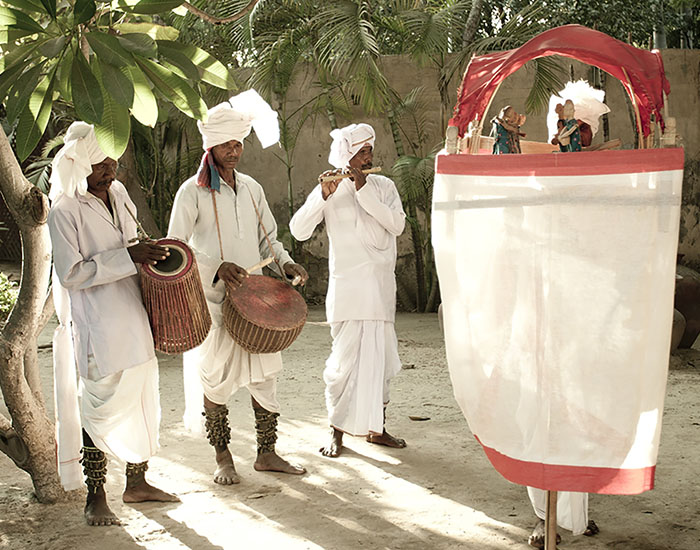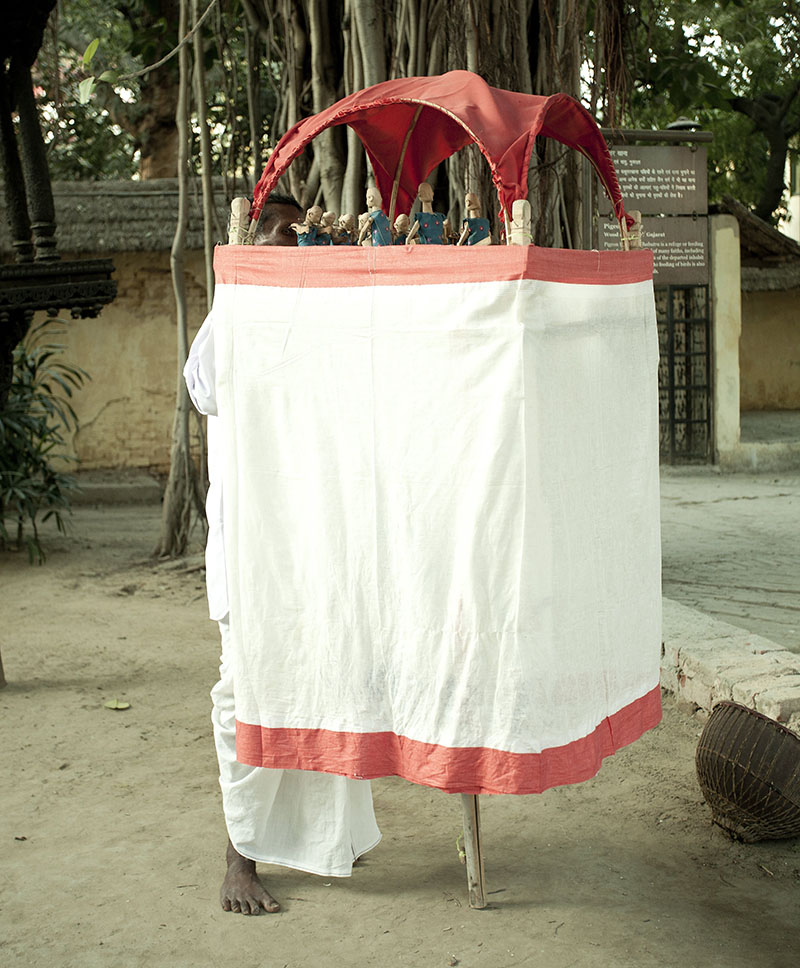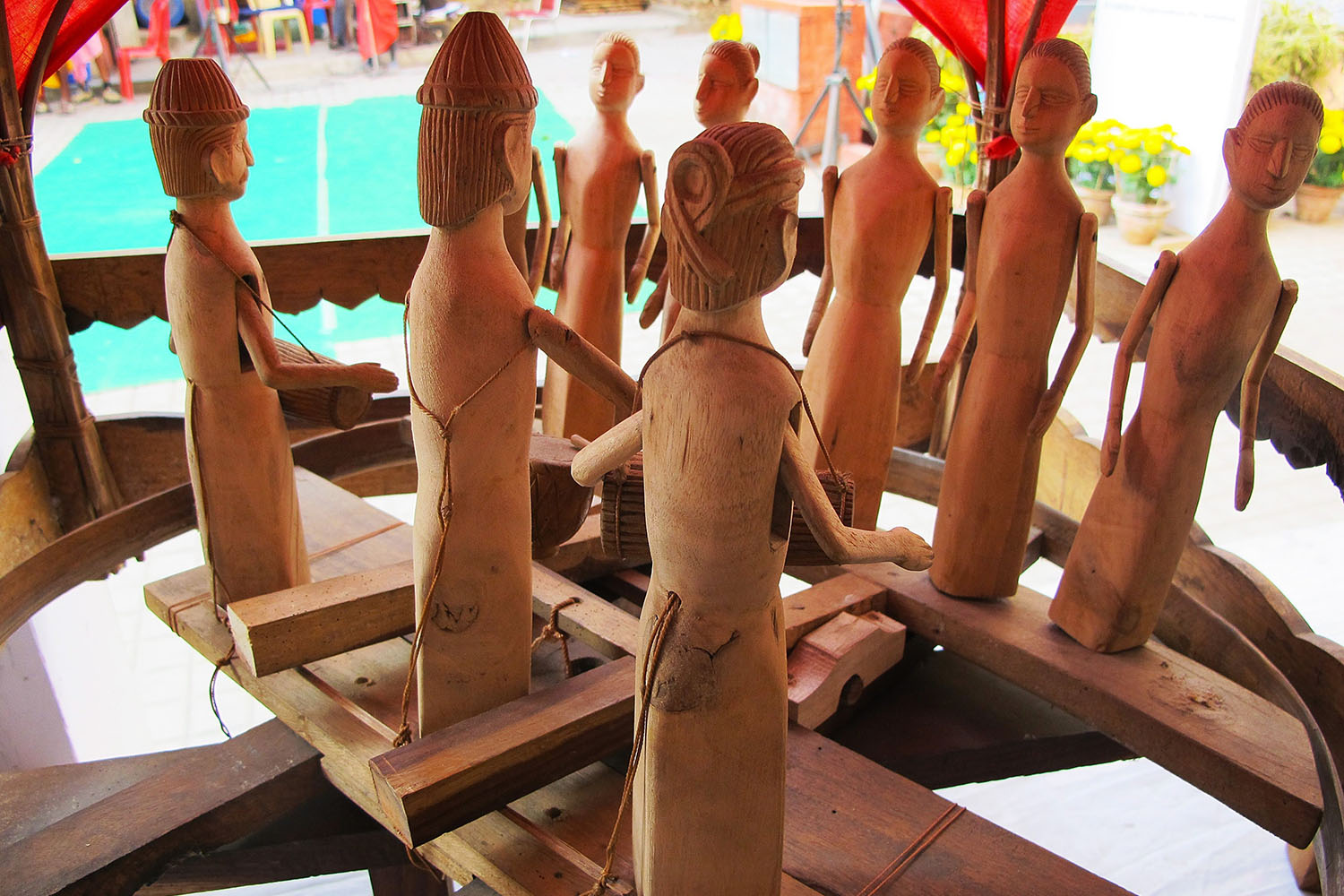
A form of puppetry practised by the Santhal community residing in parts of West Bengal and Jharkhand, chadar badar – also known as chadar bandhani or chadar badani – is distinctive for its portable set-up and intricate mechanics. Approximately six feet in height, the structure used for chadar badar consists of a stand, a stage, puppets and props, all joined together using a complex mechanism of levers and skilled woodwork. A single puppeteer can conduct the entire show, moving the puppets to the music of the accompanying musicians.
A chadar badar structure consists of two parts – the platform and the stand. During a performance, the lower half is covered with a cloth or chadar, concealing the mechanics of the stage as well as the movements of the puppeteer. Made of wood and bamboo, the platform is a square-shaped frame with a canopy. Within the platform is a circular stage called charkha. The puppets are carved and fitted in two rows onto the charkha. A short, hollow rod fixed to the central block of the charkha allows the puppeteer to rotate the stage. The other end of the rod is fixed into a hollow bamboo pole, called shirapp, which forms the stand along with four other pieces of wood. Each of the puppets on the stage has strings attached to its limbs, which join a master string running through the shirapp. The puppeteer uses one foot to tug the master string, manipulating multiple puppets at once, and the entire stage is rotated by hand to add to the effect of a traditional Santhali dance.
Also carved from wood or bamboo, the individual puppets are relatively small, measuring between 7 and 9 inches in height. Their heads, faces and arms – as well as any props such as drums – are carved separately and joined together using small sticks to allow for articulation. After this, the facial features of the puppets are painted on and they are costumed using scraps of cloth and feathers. There are primarily two types of puppets: drummers and dancers. When the puppeteer pulls the string, the arms of the drummer puppets move to depict the beating of the madhol and damak percussion drums, while the puppets depicting female dancers tilt forwards and backwards with their heads and arms also in motion.
A puppeteer is usually accompanied by musicians playing the traditional instruments of banam (a bowed, stringed instrument with a resonator), tirenya (a flute), and madhol. Performances are usually held during festivals such as Durga Puja, with puppeteers travelling from village to village. According to anthropologists, the repertory of chadar badar draws from Santhali culture as well as other cultures the puppeteers encounter on their travels. Historically, puppetry has also been an important tool of social education among the Santhals.
Requiring a high degree of craftsmanship, the practice of chadar bahar has declined over time and there are few remaining puppeteers today. Among these, the most well-known are Sukan Mardi and Daman Murmu. Since the 1980s, artist and ethnographer Ravi Kant Dwivedi has been working to document and preserve chadar badar, in addition to organising training programmes for younger members of the Santhal community.
First Published: April 21, 2022
Last Updated: July 26, 2023




